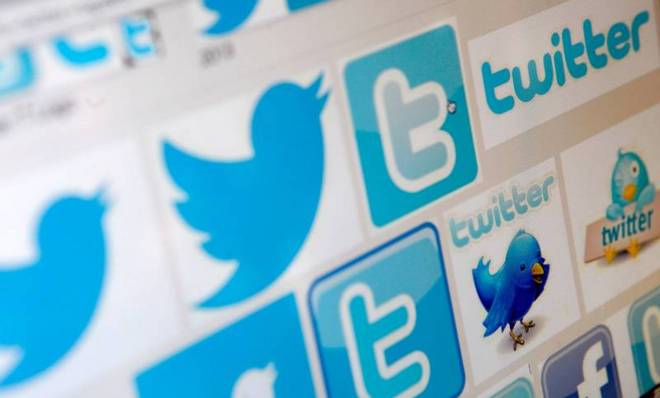7 revealing details from Twitter's $1 billion IPO filing
Say hello to TWTR


Twitter on Thursday confirmed what it had announced with a tweet last month: It plans to go public.
The social networking site publicly released its S-1 filing — a Securities and Exchange Commission form detailing its finances and plans for the future — and in the process offered some interesting new details about the company's internals ahead of the year's most eagerly anticipated stock sale.
Here, 7 interesting details from the filing:
The Week
Escape your echo chamber. Get the facts behind the news, plus analysis from multiple perspectives.

Sign up for The Week's Free Newsletters
From our morning news briefing to a weekly Good News Newsletter, get the best of The Week delivered directly to your inbox.
From our morning news briefing to a weekly Good News Newsletter, get the best of The Week delivered directly to your inbox.
A $1 billion IPO
Twitter said it aims to raise $1 billion through the initial public offering. However, that figure could very well change. Companies are required to declare how much they plan to raise, though they are by no means required to stick with those numbers. Facebook, for instance, initially said it sought $5 billion, but wound up pulling in $16 billion.
Twitter has been valued at upwards of $10 billion.
Negative profits
A free daily email with the biggest news stories of the day – and the best features from TheWeek.com
Twitter's revenue has skyrocketed in recent years. In 2012, revenue leapt an incredible 198 percent from the year before, coming in at a hair under $317 million. And the company reported earning $253 million in the first half of 2013, putting it on pace for another record year.
However, as is often the case with tech startups, it's actually losing money due to ballooning expenses.
The company lost $79.4 million last year, and is already $69.3 million in the hole this year. All told, Twitter has rung up a $418.6 million deficit since its inception.
Powerful underwriters
Twitter's massive losses, though, won't scare away investors who are focused on the service's popularity. Financial titan Goldman Sachs is the lead underwriter, according to the filing. It's joined by Morgan Stanley, JPMorgan Chase, Bank of America, Merrill Lynch, Deutsche Bank, Allen & Co., and Code Advisors.
Massive user pool, but tapering growth
There were 218.3 million monthly active users on Twitter as of June 30, up 44 percent from the prior year, according to the filing.
However, Twitter acknowledged that it could not sustain such rapid growth going forward. With U.S. growth already slowing down, the company said it would look overseas, specifically to Argentina, France, Japan, Russia, Saudi Arabia, and South Africa, to expand its user base.
And Twitter warned that it would have to find ways to stay "useful, reliable, and trustworthy" or it would risk going down the same road as once-popular companies that have turned into morbid jokes.
In short, "if people get bored and drift off, the company will have problems," says the Wall Street Journal's Paul Vigna.
Reliance on ad dollars
Almost all of Twitter's revenue comes from advertisements. According to the filing, 85 percent of all revenue last year, and 87 percent through June of this year, came from ads.
Further, "substantially all" of that ad money came from promoted tweets, accounts, and trends. Though you may glaze over #GoSeeThisCoolNewMovie when it pops up as a trending topic, Twitter banks a ton of money by boosting it to prominence.
Also of note, the company said 65 percent of all ad revenue comes from mobile platforms. In contrast, Facebook had no mobile revenue when it went public.
11 million fake users
As anyone who has used Twitter can tell you, there are plenty of fake accounts and spambots floating around the site.
Twitter acknowledged the problem in the filing, estimating that phony users make up less than 5 percent of the Twitter population. That breaks down to about 10.75 million fake accounts, says Business Insider.
Super Bowl, super reach
Twitter touted its expansive reach by noting its ubiquity in last year's Super Bowl.
Users sent more than 24 million tweets about the game while it was in progress, according to the filing. And nearly half of all commercials during the game featured a promotional hashtag.
Sports aside, the filing also remarked on how the platform has become a primary tool to directly disseminate huge news. Specifically, the company noted that President Obama declared his re-election victory in 2012 with a tweet, and that a man in Abbottabad, Pakistan, unwittingly live-tweeted the U.S. raid that killed Osama bin Laden.
Jon Terbush is an associate editor at TheWeek.com covering politics, sports, and other things he finds interesting. He has previously written for Talking Points Memo, Raw Story, and Business Insider.
-
 7 bars with comforting cocktails and great hospitality
7 bars with comforting cocktails and great hospitalitythe week recommends Winter is a fine time for going out and drinking up
-
 7 recipes that meet you wherever you are during winter
7 recipes that meet you wherever you are during winterthe week recommends Low-key January and decadent holiday eating are all accounted for
-
 Nine best TV shows of the year
Nine best TV shows of the yearThe Week Recommends From Adolescence to Amandaland
